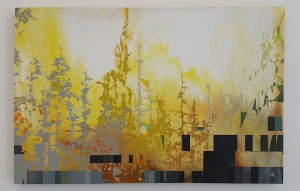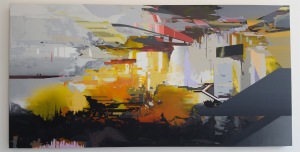Review by Michal Gavish
Bay Area multimedia artist Linda Gass was the first artist to participate in the new Creative Ecology artists residency program at the Cooley Landing in East Palo Alto. The program brings together art, science, open-space environment and educators. In a series of photographs, Linda brings to the Palo Alto Art Center images of her temporary land-art installation at the South San Francisco Bay.
With the help of members of the community, she marks the original coastline of the landing with blue bands of synthetic material, defining a large area between it and the current coastline. The work delineates the expanded area that was formed in the mid- 20th century by the land-filling from the San Mateo waste dump.
The long plastic bands stretch through the vegetation, forming an aesthetic abstract shape in the surrounding landscape. In her installation, Gass continues a long land art tradition, creating a contemporary synthesis between the artificial land enveloping of Christos’ islands and the natural landmarks that Goldsworthy arranges in his native landscape. The artist clarifies the temporary nature of the installation in a careful signage, which redirects our reaction to the foreign texture of the blue plastic in the middle of nature. As a result, instead a menacing message of pollution, the synthetic material blends with the environment and becomes part of the intended message, telling a story of a place that used to be a dump-site. Gass narrates her imagery with the happy ending of the shoreline landscape that was recently restored via land capping efforts into a renewed fresh soil with a reborn eco system of lush plants and a striving bird and fish populations.
But Gass does not let her audience enjoy the small victory of nature. Instead, she issues an ecological warning in her series of stitched silk paintings, describing how the Cooley Land is soon to disappear again under the predicted rise in sea level. Placing these fabric paintings besides her photographs of the community celebrating an environmental victory, Gass warns us on the larger ecological hazards that are threatening this strip of revitalized land. The soothing home quilting harmonies of the cyan works give the misleading sense of paradisiacal calmness and the mistaken sense of safety of a home, only to discover that they describe the devastating stages of the future disappearance of the land and its vegetation.
Linda Gass’s exhibition at the Palo Alto Art Center raises an important aspect of art activism that adds to the work its multidisciplinary significance. The show summarizes her recent residency at the Center where she devised a hands-on demonstration to the community of the fragile nature of the San Francisco Bay. Along with the apparent pleasure of silk painting practice, Gass is devoted to environmental cause and harnesses her work to the message of the sometime forgotten dangers to our surroundings.
Cooley Landing is now on view at the Palo Alto Art Center till January 22, 2016. The exhibition is part of Creative Ecology, a new artists-in-residence program. It is a collaboration between the Palo Alto Art Center and the Palo Alto Junior Museum and Zoo.
Palo Alto Art Center
1313 Newell Road
Palo Alto, CA 94303
Filed under: Linda Gass, Michal Gavish, Palo Alto Art Center | Leave a comment »




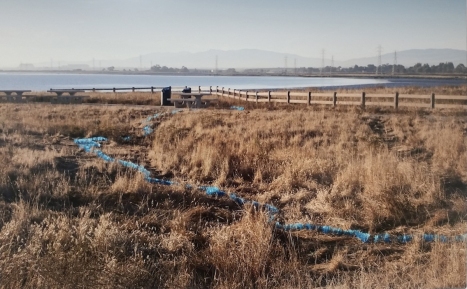


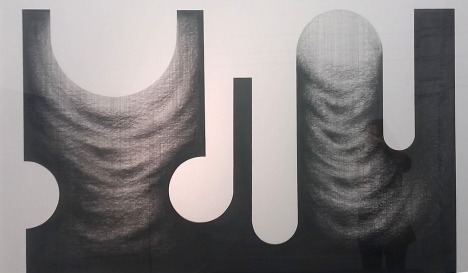
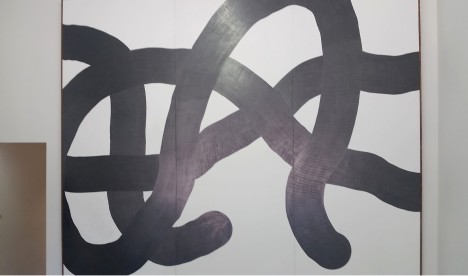
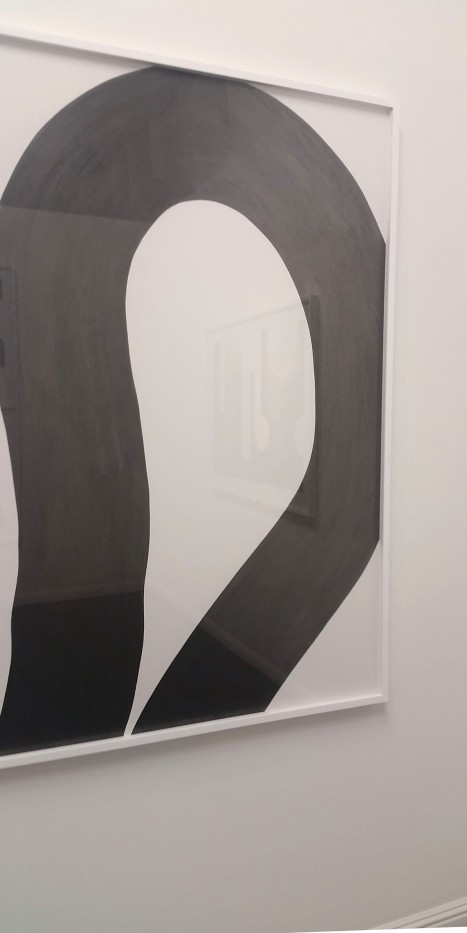
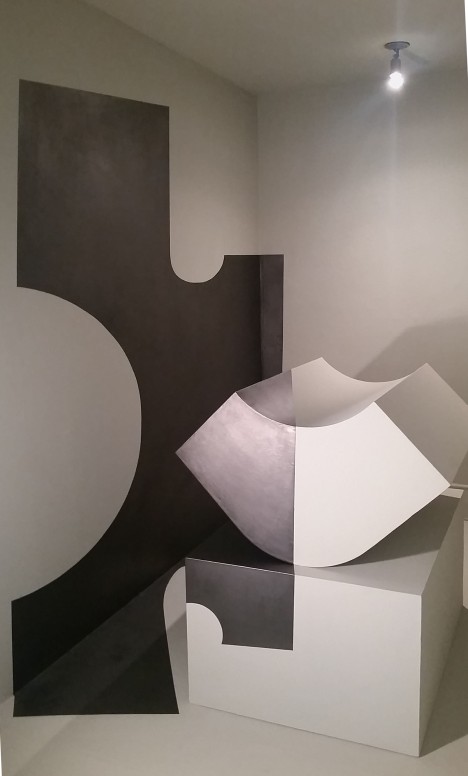



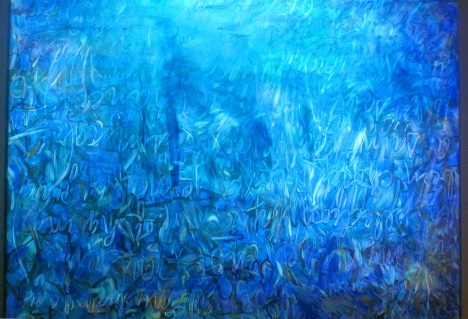
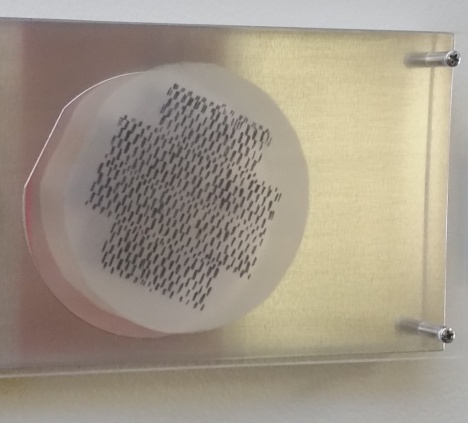
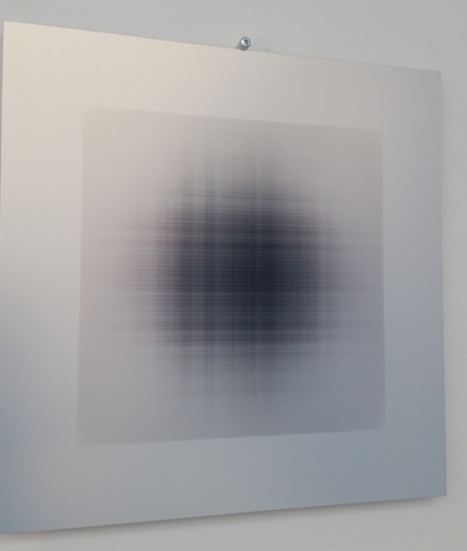


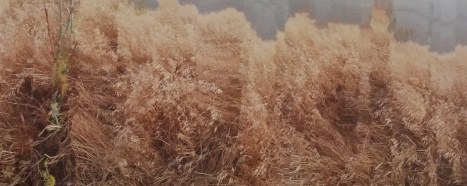


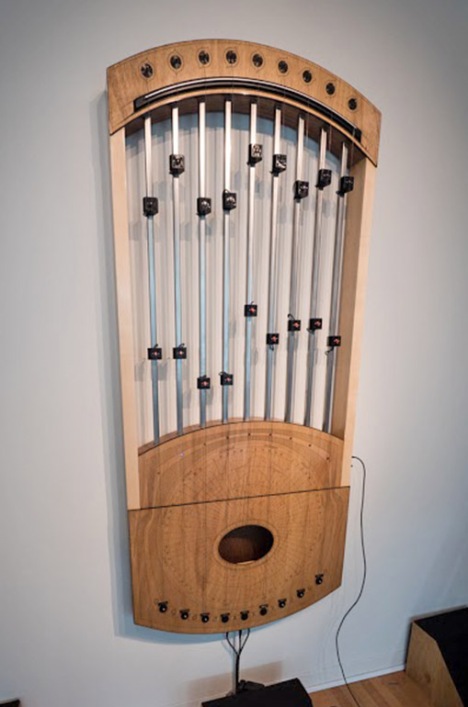
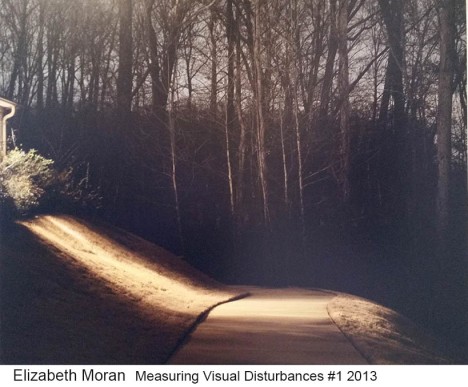

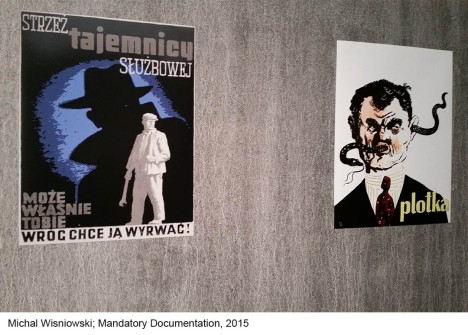
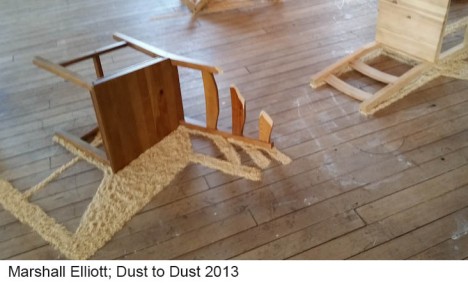
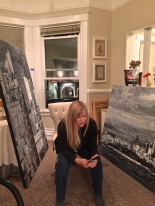
 “both”. She paints what she loves. However, the process of laying down thick impasto is not simply playing with color relationships nor is it simply studies in light and shadow. It is those things, but more importantly it is classically expressionistic. Within the framework of constrained subject matter, she uses the paint as a way of directly and subconsciously exploring her feelings about the subject.
“both”. She paints what she loves. However, the process of laying down thick impasto is not simply playing with color relationships nor is it simply studies in light and shadow. It is those things, but more importantly it is classically expressionistic. Within the framework of constrained subject matter, she uses the paint as a way of directly and subconsciously exploring her feelings about the subject.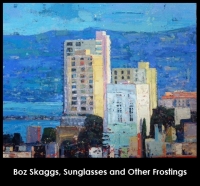
 among others, pulled back from that purism. They incorporated the emotional power of the medium itself into their paintings; but, they also used specific subjects as a scaffolding within which to explore those emotions. The subject matter was not a crutch. Both medium and subject shared equal billing. This is the legacy that Carolyn Meyer continues to explore. And, like those artists, what makes her work powerful is the very personal nature of that exploration.
among others, pulled back from that purism. They incorporated the emotional power of the medium itself into their paintings; but, they also used specific subjects as a scaffolding within which to explore those emotions. The subject matter was not a crutch. Both medium and subject shared equal billing. This is the legacy that Carolyn Meyer continues to explore. And, like those artists, what makes her work powerful is the very personal nature of that exploration. Close but no cigar. She likes having the physical references to these “almost successes”in her studio, almost like documentation of the different paths. There is a voice that wants to heard. And, it is the search for perfect pitch that keeps her painting.
Close but no cigar. She likes having the physical references to these “almost successes”in her studio, almost like documentation of the different paths. There is a voice that wants to heard. And, it is the search for perfect pitch that keeps her painting.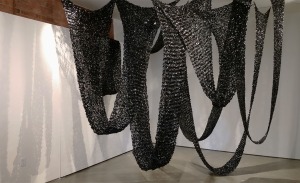
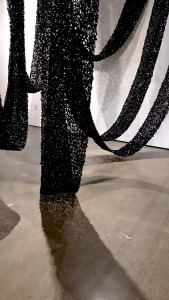
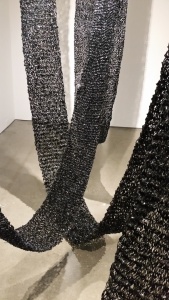

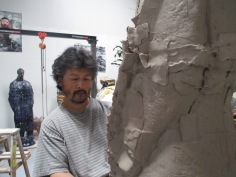
 essentially non-existent just before he started his studies. Then, the rigid control began to crack. Catalogs from contemporary Western exhibitions began to circulate at Lu Xun. The light of possibilities began to brighten. In 1985, Robert Rauschenberg had an exhibit in China. Abstract expressionism had arrived. And, around the same time, Wanxin made a field trip with his school to the burial tomb of China’s first emperor Qin Shi Huang which had opened at Xiàn where 7500 terra cotta warriors and horses had been unearthed from four excavation pits. He made endless drawings. Two of the three key elements of vocabulary that would inform Wanxin’s art over the next 30 years were now in place. The terra cotta warriors provided the ostensible subject matter of his signature series of work: Pit # 5; and, abstract expressionism gave him the freedom to use the subject improvisationally to explore a broad range of cross-cultural observations.
essentially non-existent just before he started his studies. Then, the rigid control began to crack. Catalogs from contemporary Western exhibitions began to circulate at Lu Xun. The light of possibilities began to brighten. In 1985, Robert Rauschenberg had an exhibit in China. Abstract expressionism had arrived. And, around the same time, Wanxin made a field trip with his school to the burial tomb of China’s first emperor Qin Shi Huang which had opened at Xiàn where 7500 terra cotta warriors and horses had been unearthed from four excavation pits. He made endless drawings. Two of the three key elements of vocabulary that would inform Wanxin’s art over the next 30 years were now in place. The terra cotta warriors provided the ostensible subject matter of his signature series of work: Pit # 5; and, abstract expressionism gave him the freedom to use the subject improvisationally to explore a broad range of cross-cultural observations.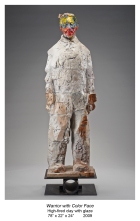
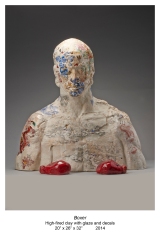
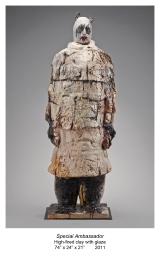 Wanxin noted that his work is about questions, not answers. In his signature series: Pit # 5, the terra cotta warriors are a surrogate for the Chinese subordination of the individual to the needs of society as whole. The addition of humorous, anachronistic elements to his versions of the warriors allows him to comment on society. One might make the assumption that he is criticizing the historical lack of individual freedom in China and lauding the individual freedom here in America. That would be a mistake. He noted in an earlier interview with Richard Whittaker in 2012: “Yes, there is great freedom here. The artist can do anything. The question is what?”. I imagine that there was a twinkle in his eye when he said that. Humor draws you into his work. It is easy access. Then, gradually it becomes disconcerting and it makes you question what you know.
Wanxin noted that his work is about questions, not answers. In his signature series: Pit # 5, the terra cotta warriors are a surrogate for the Chinese subordination of the individual to the needs of society as whole. The addition of humorous, anachronistic elements to his versions of the warriors allows him to comment on society. One might make the assumption that he is criticizing the historical lack of individual freedom in China and lauding the individual freedom here in America. That would be a mistake. He noted in an earlier interview with Richard Whittaker in 2012: “Yes, there is great freedom here. The artist can do anything. The question is what?”. I imagine that there was a twinkle in his eye when he said that. Humor draws you into his work. It is easy access. Then, gradually it becomes disconcerting and it makes you question what you know.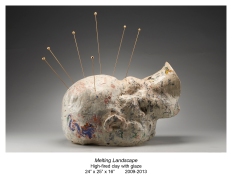

 a reference to a Chinese joke about what goes on under a monk’s robes. Then, there are also decals of traditional Chinese landscape and poetry that have been added to that surface in a third firing. And, the surface treatment of the sculpture itself is compelling on a purely abstract level. The raw, emotional treatment of the clay is undisguised. The work is not just about one thing. It does not have a single point of view. It is serious. It is humorous. It is anti-establishment. It celebrates cultural legacy. It is figurative. It is abstact. It is, for me, the best of what Wanxin has to offer.
a reference to a Chinese joke about what goes on under a monk’s robes. Then, there are also decals of traditional Chinese landscape and poetry that have been added to that surface in a third firing. And, the surface treatment of the sculpture itself is compelling on a purely abstract level. The raw, emotional treatment of the clay is undisguised. The work is not just about one thing. It does not have a single point of view. It is serious. It is humorous. It is anti-establishment. It celebrates cultural legacy. It is figurative. It is abstact. It is, for me, the best of what Wanxin has to offer.
